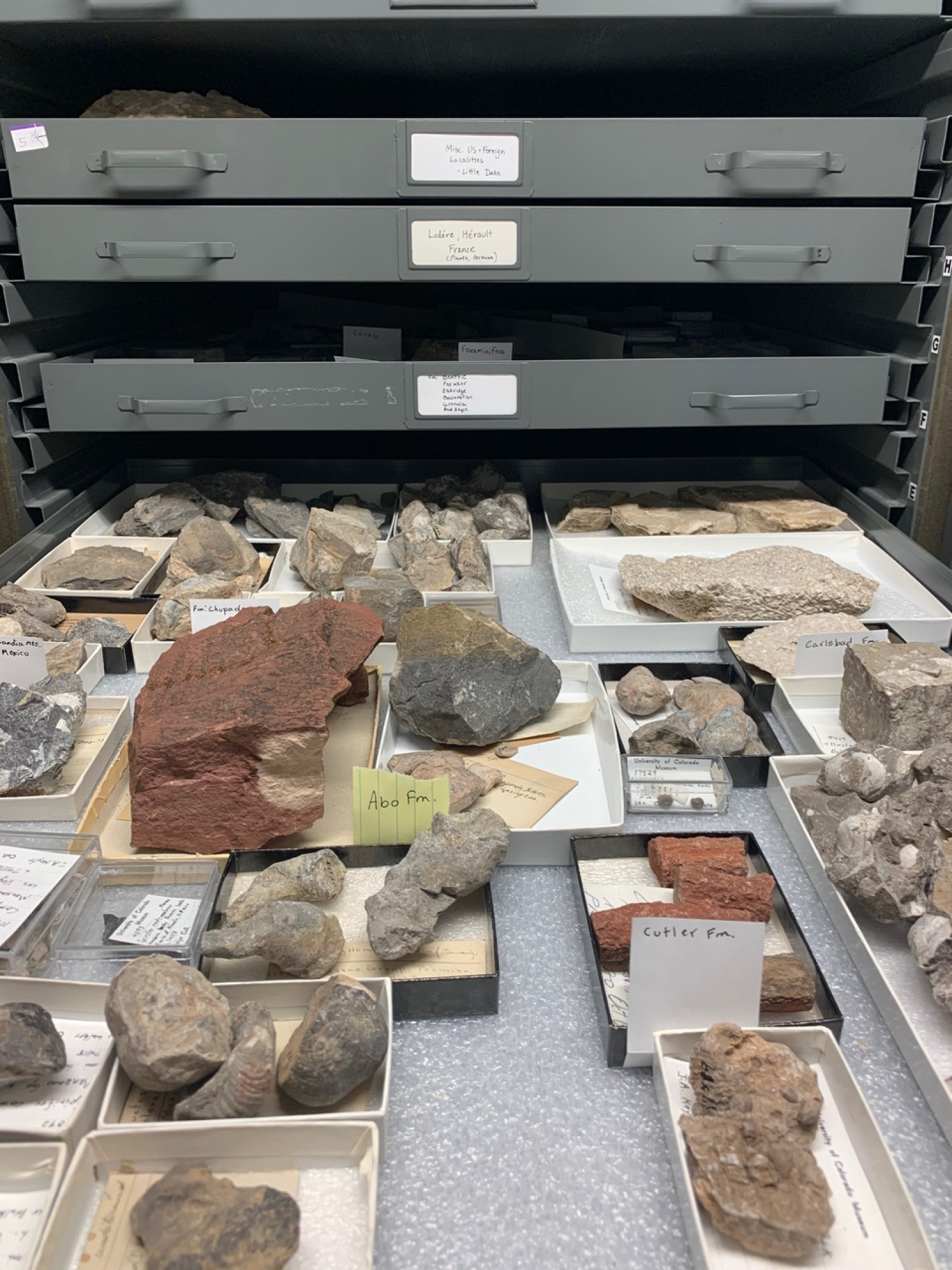The CU Museum is closed we will be opening early in the spring semester.
During this time, collection visits will be available by appointment and other special access requests will be considered on a case-by-case basis.
Please email cumuseum@colorado.edu for more information.
Permian Era Fossils
Invertebrates are animals that do not have the internal structures that form a backbone. They frequently form external skeletal structures made of calcium carbonate (picture seashells and snail shells). It is these hard, protective coverings that remain preserved in the fossil record. Invertebrate reef animals include corals, sponges, bryozoans, mollusks, worms, arthropods, and jellyfish. However, unlike the reefs of today which are made primarily of corals, the Permian reefs were made by a diversity of invertebrate animals. Individual corals are called polyps and individual bryophytes are called zooids—they are all animals.
We organize fossil collections based on time period, type, and location found. Scientists use the fossils to reconstruct past environments and to understand the evolution of life. Our Curator of Invertebrate Paleontology, Dr. Carl Simpson focuses on questions about the evolution of organisms that build colonies from individuals—how does division of labor arise? And how do these complexes built of multiple parts evolve together?
These Permian Era fossils represent just one small part of our Invertebrate Paleontology Collection. The CU Museum is currently home to approximately 280,000 marine invertebrate fossils—including many that lived in the Cretaceous Interior Seaway that covered the very place the museum now stands.


